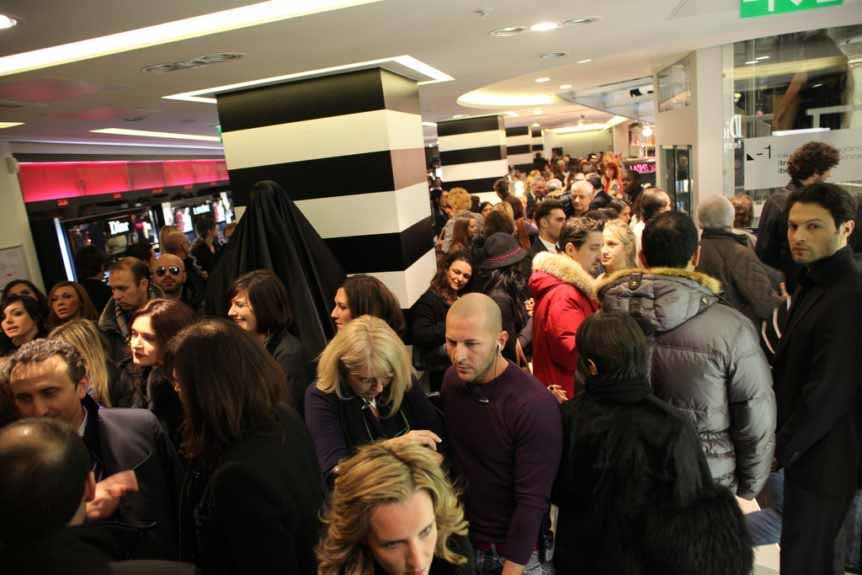First Published in CMO Australia: https://goo.gl/AH6eYt
Written by Alex Allwood and Published 5th July 2017.
Customer service that’s quick, easy and convenient has been shown to boost customer satisfaction. So it’s an odd juxtaposition that customer queues have become a sharable customer experience.
In our always on, have-it-now culture, long and tedious waiting to be served or goods to arrive, erodes customer experience and negatively impacts customer satisfaction.
With Amazon’s arrival imminent, market share attrition is a real threat for Australian businesses; as never before, the race is on for brands to strengthen their customer relationships to maintain revenue growth.
Amazon’s experiences are customer-first and built on sophisticated algorithms, innovations in technology and new service offerings such as their bricks and mortar grocery store Amazon Go.
Launched in late 2016, Amazon Go is a new retail experience that features advanced technology – replacing checkout queues with walk-in, walk-out purchasing billed directly to customers’ mobile phones.
In response, many businesses are now spending millions of dollars on innovating queue management to reduce unpleasant wait-times online, on hold, in store and by delivery. If their customer data is right, reducing wait times should make customers happier.
Whilst queuing is universally hated by customers, the problem with prioritising reductions in service wait times is that the strategy doesn’t create an experience that’s distinctive, memorable or shareable.
And while many organisations are investing in the digitisation and optimisation of their service operations, there are others that are reimagining their queuing experiences to be a signature experiences. These are the brands that are benefitting from queuing customers.
The opening of Sephora’s eighth store in Australia over the weekend had hundreds of customers queuing from 2am at Macarthur Square for the 11am opening.
Rather than being aggravated by the long wait customers had
fun, cataloguing the event and sharing their experience by posting selfie’s on Facebook, Snapchat and Instagram.
Customers posted: ‘The store is absolutely pumping’, ‘So totally jealous of everyone getting to be at Sephora opening today’, ‘Sephora launch was amazing! & I got all of this for free’
Author Joseph Pine explains signature customer experiences like Sephora’s as, ‘using goods as props and services as a stage to engage each and every person in a personal way and thereby creating memories, which is the hallmark of the experience.’
Whist the increased convenience of decreasing wait times has positive impacts on customer satisfaction; the downside is that convenience reduces the length of time that customers spend interacting with your brand.
Convenience helps customers to spend as little time as possible interacting with your business – when you save customers’ time, it makes them happy – freeing them up to spend their hard earned money on experiences that they love.
When brands design distinctive experiences, customers in turn want to spend their time and money on those experiences. To quote Pine, ‘…it’s about time and how you manage that time, how you create drama with them in that time’.
Like Amazon, Disney is another undisputed leader in designing signature experiences. Disney designed ride queues to be entertaining and create ride anticipation. The design is so successful; visitors happily wait in line for up to an hour for a 4-minute ride!
Numerous studies have shown that how people feel when they wait to be served often matters more than the time spent queuing. In a recent visit to a Commonwealth Bank branch, their concierge queue management provided enough of a distraction that the time I spent felt shorter than it actually was.
Another banking example is UMPQUA Bank based Oregon USA. Their queuing design has created a warm café environment that customers value – when a customer is waiting for an appointment they’re offered a coffee in a café-experience.
The Workshop Café in San Francisco has designed its experience to be interactive and responsive. Like Amazon Go, their customers never have to queue; they simply reserve seats and order food through a mobile app.
With Amazon’s Australian launch looming, recent analysis from Slice Intelligence shows that Amazon now commands 43 per cent of all US retail sales.
For businesses to grow sustainably post the Amazon launch, they will need to compete not just on service, but by creating experiences that are distinctive and memorable – the experiences customers want to share.

